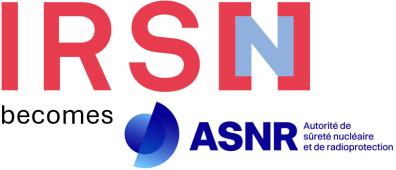Assessment of the consequences of the manufacturing anomaly in the closure head and lower head of the Flamanville 3 reactor pressure vessel
From their joint analysis of the files submitted by Areva NP, IRSN (the French technical support organisation), and the Nuclear Pressure Equipment Department (DEP) of ASN (the French nuclear safety authority) conclude that if the serviceability of the closure head and lower head of the Flamanville 3 reactor pressure vessel is demonstrated, in-service inspections must be implemented. At this stage, the feasibility of these inspections appears to have been acquired for the lower head. The same is not true for the closure head.
At the end of 2014, Areva NP discovered a manufacturing anomaly in the closure head and lower head of the Flamanville 3 reactor pressure vessel. This anomaly undermines certain mechanical characteristics of the steel of these components, in particular its toughness, i.e. its ability to withstand crack propagation in the event of a pre-existing flaw.
In 2015, Areva NP proposed an approach to demonstrate the sufficiency of the steel's toughnessfor the closure head and lower head of the pressure vessel. This approach was examined jointly by IRSN and the Nuclear Pressure Equipment Department (DEP) of ASN, and reviewed by the Advisory Committee for nuclear pressure equipment (GP ESPN) on 30 September 2015. ASN then took position and considered acceptable, in principle, the demonstration approach proposed by Areva NP.
At the end of 2016, Areva NP transmitted its analysis of the consequences of the anomaly of the closure head and lower head of the Flamanville EPR reactor pressure vessel. Areva NP concludes that the two components are serviceable.
This analysis was the subject of a joint ASN DEP - IRSN assessment, the conclusions of which were presented on 26 and 27 June 2017 to the GP ESPN. From their instruction, ASN DEP and IRSN conclude that if Areva NP has demonstrated the serviceability of the closure head and lower head of the pressure vessel of the EPR reactor in Flamanville, in-service inspections must be implemented to periodically check this equipment during the operation of the installation (expected operating life of 60 years).
At this stage, the feasibility of these inspections appears to have been acquired for the lower head. The same is not true for the closure head: failing to implement these inspections, ASN DEP and IRSN consider that the replacement of this closure head should be carried out a few years away.
More information on the assessment of the consequences of the anomaly
IRSN’s information report of 28 June 2017: Note on the assessment of the closure head and lower head of the Flamanville 3 EPR reactor pressure vessel
ASN DEP-IRSN joint report of 15 June 2017: Analysis of the consequences of the anomaly in the Flamanville EPR reactor pressure vessel head domes on their serviceability
More information on the analysis of the demonstration approach
ASN DEP-IRSN joint report of 15 September 2015: Analysis of the procedure proposed by AREVA to prove adequate toughness of the domes of the Flamanville 3 EPR reactor pressure vessel lower head and closure head
Opinion of the Advisory Committee for nuclear pressure equipment (GP ESPN) of 30 September 2015: Opinion concerning the procedure proposed by AREVA to demonstrate the adequate toughness of the domes of the Flamanville 3 EPR reactor pressure vessel (RPV) bottom head and closure head
Position statement of ASN: Letter of 14 December 2015 from ASN to Areva
Position statement of ASN: Interim review of the approach to demonstrate the adequate toughness of the reactor pressure vessel upper and lower domes - 26 September 2016
